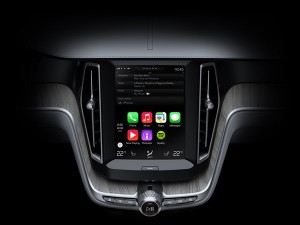 A WiFi war is about to break out in our cars.
A WiFi war is about to break out in our cars.
General Motors, Hyundai, and several other OEMs have made announcements around Apple CarPlay and Android Auto development and deployments recently.
Hyundai has announced the deployment of Android Auto on the 2015 Hyundai Sonata with navigation, starting this weekend.
General Motors announced the availability of both Apple CarPlay and Android Auto on 14 of its model-year 2016 Chevrolet models, including such nameplates as Camaro, Cruze, Impala, Malibu, Spark, and Volt, just to name a few.
The Chevrolet vehicles will make CarPlay and Android Auto a standard feature of the 7-inch and 8-inch MyLink infotainment systems, but not paired with navigation. Other automakers are expected to make similar product announcements soon.
IHS Automotive has recently completed consumer research which points to very high interest, among aware consumers. About 30% of new car intenders were aware of Apple CarPlay, where about 35 percent of new car intenders were aware of Android Auto. Of those who were aware, 60 percent were interested in Apple CarPlay and 58 percent were interested in Android Auto.
This relatively high consumer demand for a product that has yet to be released is one of the main factors that IHS Automotive is so bearish on the forecast of these technologies. IHS forecasts Apple CarPlay and Android Auto to have growth rates similar to what Bluetooth and 3.5mm Auxiliary Inputs had over the last 10 years.
This will result in Apple CarPlay and Android Auto reaching 31.4M global unit sales and 36.8M global unit sales in 2020, respectively. This is fast growth, in a very short time for automotive.
One major concern IHS Automotive has in the deployment of Apple CarPlay and Android Auto is the carmaker’s brand DNA. Much attention is paid to the brand behind Chevrolet MyLink, Ford SYNC 3, Toyota Entune, Nissan Connect, Kia UVO, BMW ConnectedDrive and more. These brands already represent a very connected car and connected user experience.
While including the functions of Apple CarPlay and Android Auto is important to these automaker’s customers, it is also potentially replacing that very user experience that they have spent time and resources on to develop and deploy, independently of the Apple and Google technologies.
However, concurrently automakers are developing and deploying over-the-air update capabilities to rapid improvements and updates to infotainment systems in the future.
This could perhaps allow OEMs to help level the playing field with companies like Apple and Google who are more used to offering low cost, frequent updates.

